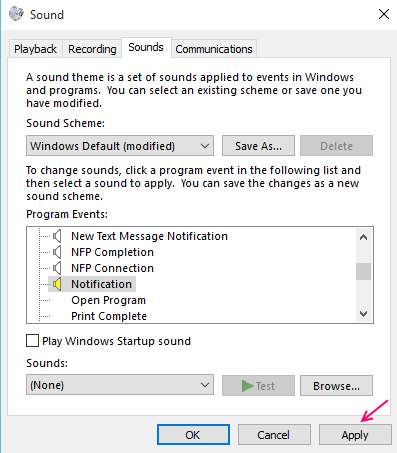

:max_bytes(150000):strip_icc()/002_how-to-change-monitor-refresh-rate-setting-in-windows-2626207-5c86b66346e0fb000133654d.jpg)
A session becomes active when its first stream becomes active. An inactive stream is in the stopped state. An active stream is in the running state. It does not display volume controls for audio-capture devices.Ī session is active if it contains one or more active streams. The Sndvol program currently displays volume controls for audio-rendering endpoint devices only. Through these controls, users can adjust the volume and mute settings for all of the sessions in the system.
#Pnp audio device mute notification windows windows#
For example, in Windows Vista, the system-supplied program, Sndvol.exe, displays a volume control and mute control for each active or recently active rendering session in the system. Instead, users control these settings through the user interfaces of control programs. Typical audio applications should avoid modifying the volume and mute settings for sessions. Any stream that the application does not explicitly assign to a session belongs to the default session. However, the application can, as an option, assign different streams to different sessions. The global mix combines all of the sessions from all of the applications that share the device.įrequently, an application with several streams assigns all of its streams to the same session. After a stream object is created, the object exists until a client releases the last counted reference to the object, and then the object is deleted.Īlthough a client cannot change the session to which an existing stream is assigned, it can achieve a similar effect by deleting the stream (by releasing all references to it), creating a new stream to replace the deleted stream, and assigning the new stream to another session.Įach rendering session represents a subset of the streams that form the global mix that plays through a particular audio endpoint device. The stream retains its membership in the session for the lifetime of the stream. A client assigns an audio stream to a particular session at the time that it initializes the stream object. For more information about loopback mode, see Loopback Recording.)Įvery audio stream belongs to exactly one session. That is, the session settings are not persistent. (A session that contains streams that operate in loopback mode is treated the same as a capture session. The volume and mute settings for a capture session are not persistent. By default, the volume and mute settings for a rendering session are persistent across system restarts. For more information, see IAudioClient::Initialize.Īn audio session contains either rendering streams or capture streams, but not both. When a client initializes an audio stream, it assigns the audio stream to an audio session. The system applies client-specified volume and mute settings uniformly to all of the streams in the session. Clients can control the volume level and muting state of each individual session. An audio session is a group of related audio streams that a WASAPI client can manage collectively.


 0 kommentar(er)
0 kommentar(er)
